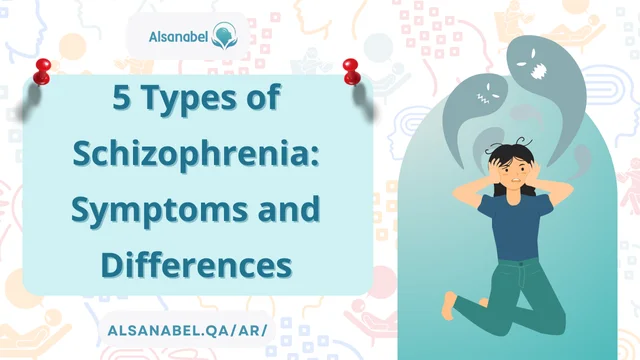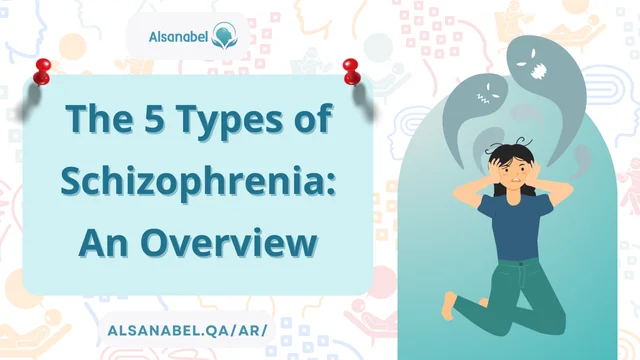
Schizophrenia is a complex and heterogeneous mental health disorder that manifests in various ways, making it challenging to diagnose and treat. Historically, the condition was classified into 5 types of schizophrenia based on the predominant symptoms and their severity. While the DSM-5 (Diagnostic and Statistical Manual of Mental Disorders, Fifth Edition) has moved away from these subtypes, understanding the schizophrenia subtypes remains valuable for clinicians and caregivers. This article explores the classification of schizophrenia, delving into the 5 types of schizophrenia and their unique characteristics. By examining the different schizophrenia types, we aim to provide a comprehensive understanding of how symptoms vary and how treatment can be tailored to each subtype.
The 5 Types of Schizophrenia: An Overview
The 5 types of schizophrenia were historically recognized as distinct categories, each defined by specific symptom patterns. These subtypes include Paranoid, Disorganized, Catatonic, Undifferentiated, and Residual schizophrenia. Below, we explore each of these schizophrenia subtypes in detail, highlighting their symptoms, diagnostic criteria, and treatment approaches.

1. Paranoid Schizophrenia: The Hallmark of Delusions and Hallucinations
Paranoid schizophrenia is perhaps the most well-known of the 5 types of schizophrenia. It is characterized by prominent positive symptoms, such as delusions and auditory hallucinations, while cognitive and emotional functioning remain relatively intact.
Key Symptoms
- Delusions: Often persecutory or grandiose in nature, these false beliefs are a defining feature.
- Auditory Hallucinations: Hearing voices, often critical or commanding, is common.
- Relative Preservation of Functioning: Unlike other subtypes, individuals with paranoid schizophrenia may maintain better cognitive and emotional abilities.
Diagnosis and Treatment
Diagnosis is based on the presence of delusions and hallucinations without significant disorganized speech or behavior. Treatment typically involves antipsychotic medications, psychotherapy, and social support to manage symptoms and improve quality of life.
2. Disorganized Schizophrenia: The Challenge of Cognitive Dysfunction
Disorganized schizophrenia, also known as hebephrenic schizophrenia, is marked by severe disorganization in thought, speech, and behavior. This subtype is one of the most debilitating of the schizophrenia subtypes.
Key Symptoms
- Disorganized Speech: Incoherent or tangential speech patterns make communication difficult.
- Disorganized Behavior: Erratic or inappropriate actions, such as laughing at inappropriate times, are common.
- Flat or Inappropriate Affect: Emotional expression is often blunted or incongruent with the situation.
Diagnosis and Treatment
Diagnosis focuses on the presence of disorganized speech and behavior, along with flat or inappropriate affect. Treatment includes antipsychotic medications, cognitive-behavioral therapy (CBT), and structured support to improve daily functioning.
3. Catatonic Schizophrenia: The Paradox of Movement
Catatonic schizophrenia is one of the most distinctive of the 5 types of schizophrenia, characterized by extreme disturbances in motor behavior. Individuals may exhibit either excessive movement or a complete lack of it.
Key Symptoms
- Catatonic Stupor: A state of immobility and unresponsiveness.
- Catatonic Excitement: Hyperactivity and purposeless movement.
- Echolalia and Echopraxia: Repeating others’ words or actions.
Diagnosis and Treatment
Diagnosis is based on the presence of catatonic symptoms, which may occur in conjunction with other schizophrenia symptoms. Treatment often involves benzodiazepines or electroconvulsive therapy (ECT) to address acute symptoms, followed by antipsychotic medications and supportive care.
4. Undifferentiated Schizophrenia: The Mixed Presentation
Undifferentiated schizophrenia is a catch-all category within the classification of schizophrenia. Individuals with this subtype exhibit symptoms that do not clearly fit into the other categories but still meet the general criteria for schizophrenia.
Key Symptoms
- Mixed Symptoms: A combination of positive symptoms (e.g., hallucinations, delusions) and negative symptoms (e.g., social withdrawal, flat affect).
- Variable Presentation: Symptoms may fluctuate over time, making diagnosis challenging.
Diagnosis and Treatment
Diagnosis is made when symptoms are present but do not align with the other subtypes. Treatment is tailored to the individual’s specific symptoms and may include antipsychotic medications, psychotherapy, and lifestyle interventions.
5. Residual Schizophrenia: The Lingering Effects
Residual schizophrenia is characterized by a history of at least one psychotic episode, with ongoing negative symptoms or milder forms of positive symptoms. This subtype represents a chronic phase of the disorder.
Key Symptoms
- Negative Symptoms: Social withdrawal, flat affect, and reduced motivation are common.
- Mild Positive Symptoms: Occasional hallucinations or delusions may persist but are less severe.
Diagnosis and Treatment
Diagnosis is based on a history of schizophrenia with current symptoms that are less severe. Treatment focuses on managing residual symptoms through antipsychotic medications, therapy, and community support.
Comparing the 5 Types of Schizophrenia
While the 5 types of schizophrenia share core features, they differ significantly in terms of symptom presentation and severity. Below is a comparison of the different schizophrenia types:
| Subtype | Key Symptoms | Diagnostic Focus | Treatment Approach |
|---|---|---|---|
| Paranoid | Delusions, hallucinations | Presence of delusions and hallucinations | Antipsychotics, psychotherapy |
| Disorganized | Disorganized speech, behavior, flat affect | Disorganization in thought and behavior | Antipsychotics, CBT, structured support |
| Catatonic | Motor disturbances (stupor or excitement) | Catatonic symptoms | Benzodiazepines, ECT, antipsychotics |
| Undifferentiated | Mixed symptoms | Symptoms not fitting other subtypes | Tailored to individual symptoms |
| Residual | Negative symptoms, mild positive symptoms | History of schizophrenia with milder symptoms | Antipsychotics, therapy, support |
Frequently Asked Questions

What are the 5 recognized types of schizophrenia?
The 5 types of schizophrenia are Paranoid, Disorganized, Catatonic, Undifferentiated, and Residual schizophrenia.
How do the symptoms differ among these 5 types?
- Paranoid: Dominated by delusions and hallucinations.
- Disorganized: Marked by disorganized speech and behavior.
- Catatonic: Characterized by motor disturbances.
- Undifferentiated: Mixed symptoms that don’t fit other categories.
- Residual: Persistent negative symptoms with milder positive symptoms.
Which type is associated with predominantly positive symptoms?
Paranoid schizophrenia is associated with predominantly positive symptoms, such as delusions and hallucinations.
How is each type diagnosed?
Diagnosis is based on the predominant symptoms:
- Paranoid: Delusions and hallucinations.
- Disorganized: Disorganized speech and behavior.
- Catatonic: Motor disturbances.
- Undifferentiated: Mixed symptoms.
- Residual: History of schizophrenia with milder symptoms.
What treatment options are tailored for each type?
- Paranoid: Antipsychotics and psychotherapy.
- Disorganized: Antipsychotics, CBT, and structured support.
- Catatonic: Benzodiazepines, ECT, and antipsychotics.
- Undifferentiated: Tailored to individual symptoms.
- Residual: Antipsychotics, therapy, and community support.
By understanding the 5 types of schizophrenia, we can better appreciate the diversity of this condition and tailor interventions to meet the unique needs of individuals. While the DSM-5 no longer uses these subtypes, the classification of schizophrenia remains a valuable tool for clinicians and caregivers. Recognizing the different schizophrenia types helps reduce stigma, improve diagnosis, and enhance treatment outcomes, ultimately fostering a more compassionate and informed approach to mental health care.
%20(2).jpg)
